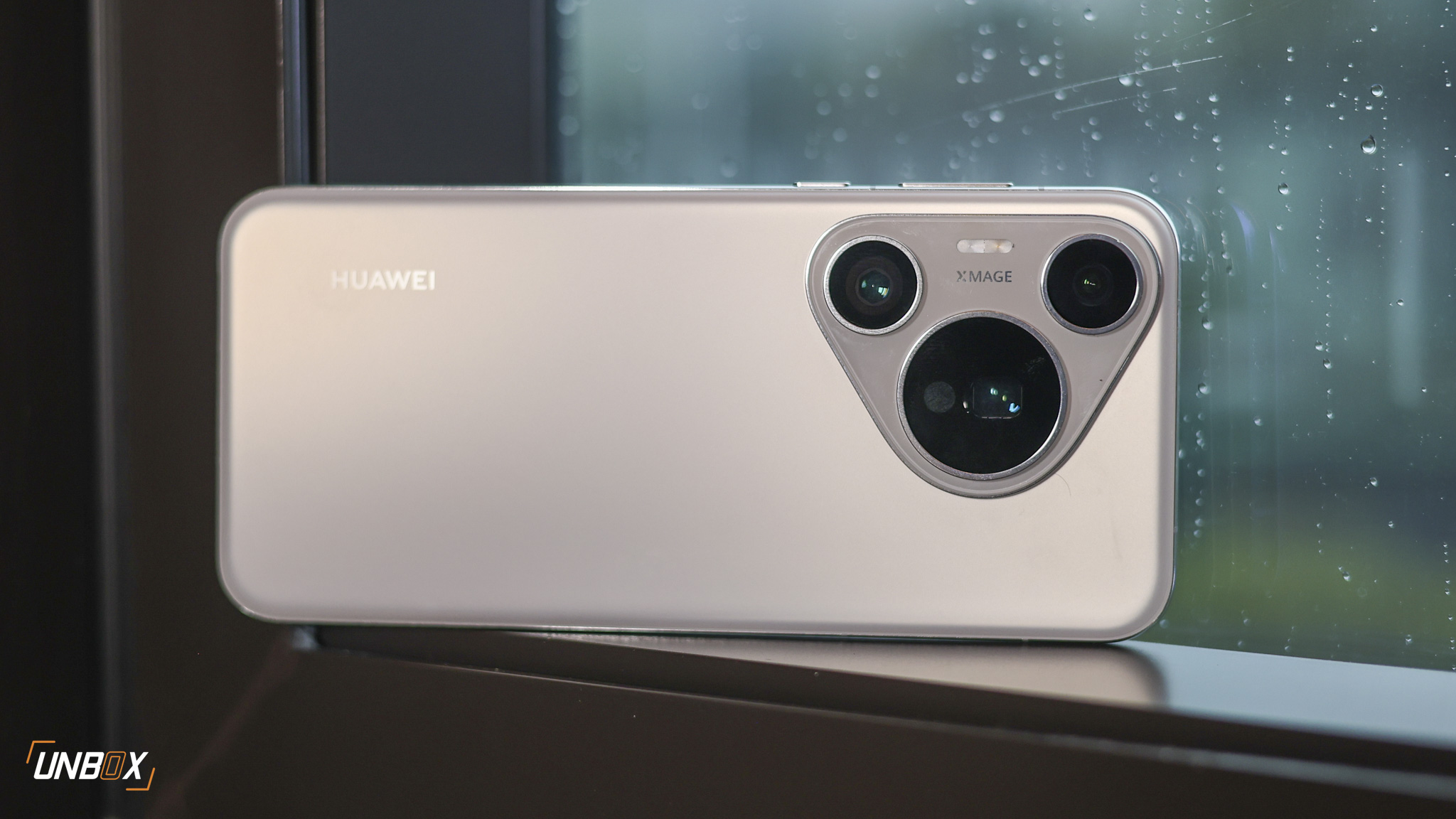 We review the Mi A3!
We review the Mi A3!
While the Mi A2 was generally a good Android One phone, the brand’s second Android One offering was met with a lot of criticism from the Xiaomi faithful. The removal of the headphone jack and microSD card slot elicited complaints from Xiaomi fans, and the phone suffered from less than stellar battery life during our time with it.
Xiaomi took notes of the Mi A2’s flaws and addressed them with the Mi A3 (aka Mi CC9e in China). The MicroSD card slot and headphone jack made a comeback, and you get a bigger battery as well, on top of several upgrades with the display, processor, and cameras.
Is the Mi A3 the perfect budget mid-range Android One phone?
 Unboxing and packaging contents
Unboxing and packaging contents
Unlike most Xiaomi phones we have unboxed in the past, the Mi A3’s white box comes with a photo of the phone’s front and back, along with a small Mi branding on the top right corner and the phone’s model name.
Inside, you have the usual contents: the phone itself, translucent dark grey jelly case, USB-C cable, documentation, SIM ejector pin, and a 10w charging brick.
 The most premium Android One phone Xiaomi’s ever made
The most premium Android One phone Xiaomi’s ever made
Unlike its predecessor, the Mi A3 uses a glass back with a clean, modern Xiaomi branding on the bottom left part and Android One branding on the right side. While it has a glossy finish, the Mi A3 is more resistant to smudges compared to other glass-backed phones we have reviewed in the past. Our review unit is in the Kind of Grey color, with the glass finish subtly shifting its gradient depending on how light hits it.
Like most Android phones of today, you get a sizable camera bump with the Mi A3. It is highly advisable to use the supplied jelly case to protect it from bumps and scratches because of this reason. Unfortunately, the Mi A3 does not a pre-applied screen protector, so you might want to consider investing in one.
Xiaomi brought back the headphone jack and MicroSD card slot with the Mi A3, which should please people who want expandable storage (and find the 128GB of space on the Mi A3 lacking) and who still want to use their wired cans with the phone.
 Nice AMOLED colors, but resolution is a letdown
Nice AMOLED colors, but resolution is a letdown
We have mixed thoughts about the Mi A3’s display, but let’s start with the good: you get an AMOLED over an IPS one, which has generally more vibrant colors have deeper blacks compared to the previous generation.
Now, for the bad: the Mi A3’s HD+ resolution is a letdown considering its predecessor had full HD+ resolution. While you might not notice it at first because of the screen size (6.088 inches), you’ll notice the downgrade when you start consuming video content, or if you upgraded to the Mi A3 from a phone that has a full HD display.
Despite being an AMOLED panel, you don’t get an Always On Display. Instead, you have an Ambient Display feature where the display lights up every time you get a new notification.
 The Mi A3 has a clean back panel since its fingerprint scanner is now an in-display variety. We found that budget phones that employ in-display fingerprint scanners tend to have slower implementations of the tech, and the Mi A3 is no exception.
The Mi A3 has a clean back panel since its fingerprint scanner is now an in-display variety. We found that budget phones that employ in-display fingerprint scanners tend to have slower implementations of the tech, and the Mi A3 is no exception.
 Snapdragon 665 a much-welcome boost
Snapdragon 665 a much-welcome boost
Like its predecessors, the Mi A3 is powered by a Snapdragon 600-series processor—specifically, Qualcomm’s new Snapdragon 665 processor. While it has a lower clock speed than the Snapdragon 660 (2.0Ghz on the Snapdragon 665 vs 2.2Ghz on the Snapdragon 660), the Snapdragon 665 is manufactured using a newer 11nm process and has a better Adreno 610 GPU. These small upgrades make the Snapdragon 665 a better performing chipset, though performance difference isn’t that big.
When it comes to games, the Mi A3 performed well save for Asphalt 9, where we barely scored an average FPS of 18 based on results obtained from GameBench. That may be due to the fact that Asphalt 9 isn’t optimized yet for Snapdragon 665-powered phones.
As for the other three games we used for testing—PUBG Mobile, Vainglory, and Future Fight, the Mi A3 managed to run these games smoothly with high average frame rates.
The Mi A3 comes with stock Android, and you get only three additional apps (AliExpress, Mi Community, Mi Store) with it. Being an Android One device, the Mi A3 is guaranteed for at least two major Android updates and is up-to-date when it comes to security updates (our review unit has the September 2019 security update as of this writing).
 Front and rear cameras are a big step-up from its predecessor
Front and rear cameras are a big step-up from its predecessor
One of the biggest upgrades on the Mi A3 are the cameras. For the back, you get a triple camera setup comprising of a 48-megapixel f/1.8 Sony IMX586 main camera, 8-megapixel f/2.2 ultra-wide-angle camera, and 2-megapixel f/2.4 depth sensor. The 48-megapixel main camera produced great shots and performed well even in low light (regardless if you enable night mode or not). For videos, you can shoot 4K videos at 30FPS and Full HD videos at up to 60FPS with the 48-megapixel main camera.
As for the 8-megapixel ultra-wide-angle, you get decent colors and dynamic range when shooting in daylight and mixed lighting, though images are softer compared to those captured using the 48-megapixel main camera. The ultra-wide-angle camera is not limited to photos; you can also use it for capturing video, though you are limited to Full HD resolution.
The 32-megapixel front camera, on the other hand, produced natural-looking selfies that retain a good amount of detail to our faces.
 Respectable battery life at last
Respectable battery life at last
One of the biggest complaints with the Mi A2 is its lackluster battery life, and Xiaomi addressed that with the Mi A3 by placing a 4030mAh cell. Paired with a power-efficient Snapdragon 665 processor, we got a respectable PCMark score of 11 hours, which translates to a day of use.
Using the Mi A3 as our daily driver, we managed to end the day with 20% juice left. Our usage consisted of listening to music, answering emails, browsing through social media, extensive use of the cameras for both photo and video, and a few games on the side.
While the Mi A3 comes only with a 10w charger, it supports 18w fast charging. Juicing up the battery using an 18w charger took us a little under two hours from zero to 100.
 Verdict: Almost perfect for its price
Verdict: Almost perfect for its price
With a Php 11,990 price tag, the Mi A3 is more affordable than the Mi A2 at launch and offers more features as well. Aside from a processor bump, you get an AMOLED display, triple rear cameras, a decent (albeit slightly slow) in-display fingerprint scanner, a bigger battery, a microSD card slot, and a headphone jack.
While people may criticize the display resolution downgrade on the Mi A3, it is a small compromise to pay for all the features it has to offer at a sub-Php 12k price. The only other phone that can compete against the Mi A3’s is Xiaomi’s own Redmi Note 7: at Php 11,290 for the 4GB/128GB variant, you get a dual rear camera setup, a conventional fingerprint scanner, and an older Snapdragon 660 processor in exchange for a bigger 6.3-inch Full HD+ IPS display.
Xiaomi Mi A3 specs
- Qualcomm Snapdragon 665 octa-core processor
- Adreno 610 GPU
- 4GB RAM
- 6.088-inch HD+ AMOLED display
- 128GB internal storage
- Triple rear camera setup: 48-megapixel f/1.8 Sony IMX586 main camera; 8-megapixel f/2.2 ultra-wide-angle camera; 2-megapixel f/2.4 depth camera, Dual Pixel and Laser Autofocus, dual-tone flash, AI scene detection, and AI portrait
- 32-megapixel f/2.0 front camera
- Dual SIM, with 4G LTE, LTE-A
- Dual Frequency GPS, GLONASS
- WiFi, Bluetooth 5.0, NFC
- In-display Fingerprint scanner, USB-C, Reading Mode 2.0, Game Turbo
- 4030mAh battery with 18W Quick Charging
- Android Pie (Android One)





























